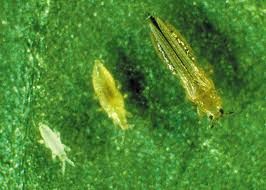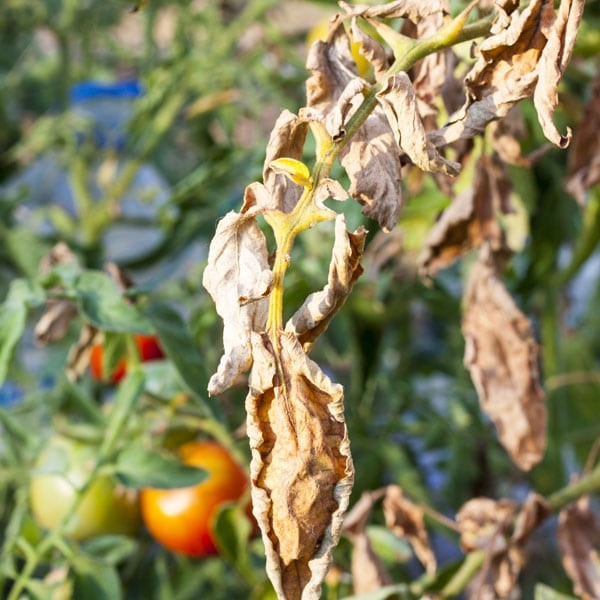
Soil: The majority of soil types are ideal for tomato growth but the optimal pH range for sandy loam soil is 5.5 to 7.0.
Land Preparation: 3-4 ploughings are recommended for good seed bed. Raise beds of 1.5 m breadth should be made before plantation.
Sowing Season
Nursery raising time
Detail: Nursery should be set in November.
Nursery transplantation
Detail: February and March are best time for sowing of nursery.
Layout/Sowing Method
Nursery Preparation in November
Transplanting: When Seedlings of 15-25 cm height with 3-5 true leaves, farmer may transplanting. Ideal time of transplanting is during noon.
Row-Row distance: 2.5-3.5 ft and Plant-Plant distance: 2-2.5 ft
Irrigation
1st irrigation
Detail: Irrigation must be conducted immediately after nursery transplantation.
Onward irrigations
Detail: At 7 days interval.
Suitable areas: Swat, Malakand, North Waziristan, Khurram, Charsadda, Mardan, Swabi, Nowshera, Tank, and South Waziristan
Varieties: Rio Grande, Roma, Moneymaker, Sahil, FM-9, Ana seminis hybrid tomato, 1359
Fertilizer: 46 kg N, 60 kg P, 25 kg K per acre. Full P and half N, K before transplanting while half N, K should apply 6-8 weeks after transplanting.
Harvesting Time
Best time for harvesting: When the fruit turns a rich crimson colour and is fully grown.
Diseases
Bacterial wilt (Ralstonia solanacearum)
Identification: The initial signs of infection in plants are wilting of the terminal leaves, which is followed in a couple of days by a sudden and irreversible wilt, but there is no sign yellowing. On the main stems, new shoots may form. Plants with the infection have a light to dark brown vascular system.
Management
Cultural Control
- Use tolerant varieties of the plant.
- Avoid infested fields since once the soil has been infected, Solanaceae should not be grown for at least 7 years.
- Rotate with cereal crops.
- Do not injure roots or leaves. Carefully prune during transplantation.
- Make sure the field is well drained.
Chemical Control
Use copper base fungicide: copper oxychloride or copper hydroxide
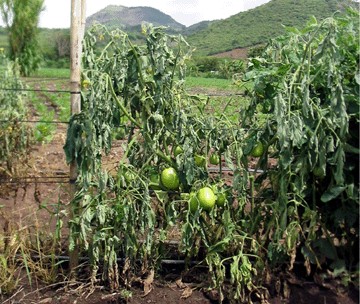

Tomato yellow leaf curl virus
Identification: Stunted and upright plants are a sign of an infection. Yellow leaves curl upwards or downwards. If plants are sick in the nursery, the entire harvest could be lost. TYLCV is transmitted by Whitefly.
Management
Cultural Control
➢ Use tolerant varieties.
➢ Use reflective plastic mulch.
➢ Protect seedlings with a net in the nursery.
Chemical Control
➢ Control the insect vector (imidacloprid, thiamethoxam)
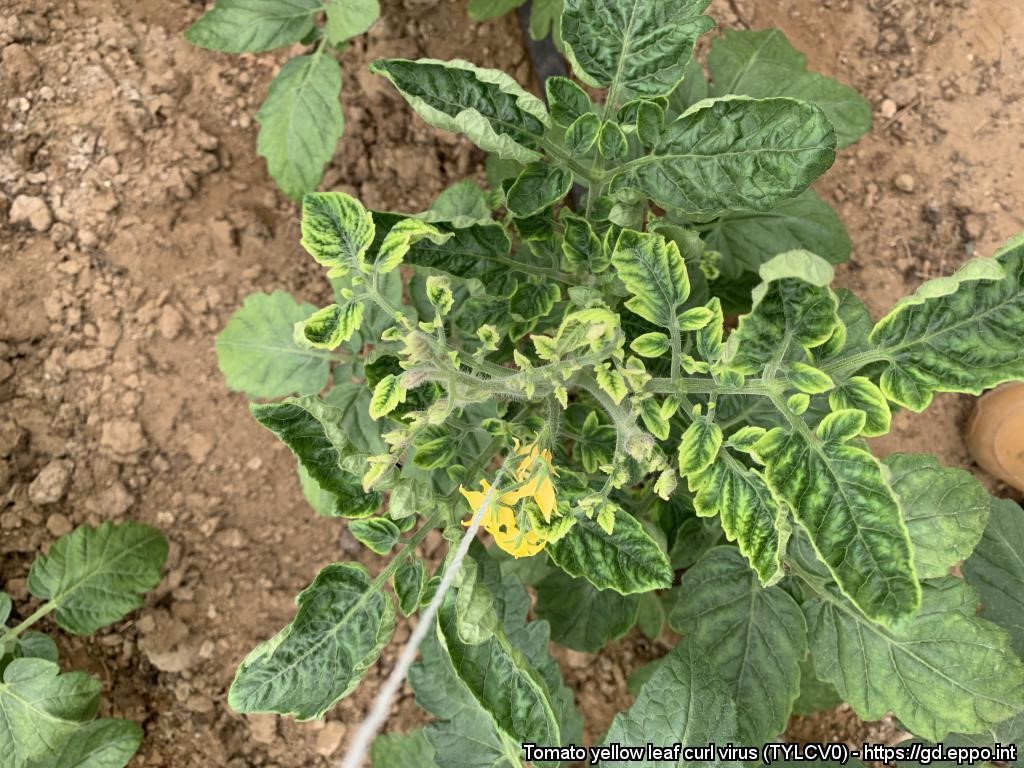
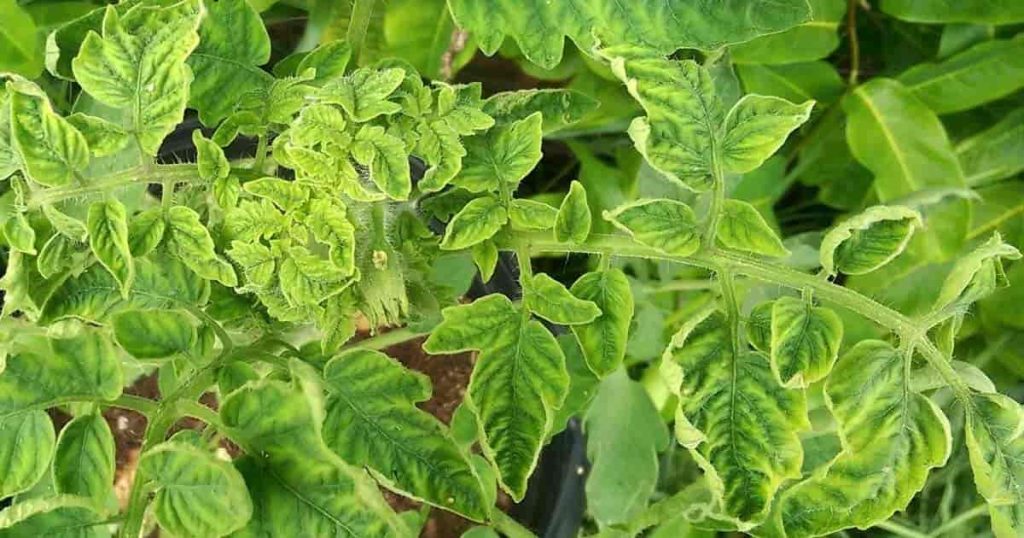
Early blight (Alternaria solani)
Identification
Early blight spreads through the wind, rain, diseased plant remnants, and seeds. Disease development is seen in a round form, 1.5 cm diameter brown spots with concentric rings on the leaves. Little bumps can appear on the stem or on the foliage, causing the leaves to yellow and wilt. Little fruits and flowers end up dropping off and cause a yield loss.
Management
Cultural Control
➢ Use tolerant varieties.
➢ Remove and burn damaged plant parts.
➢ Weed regularly and thoroughly.
➢ Use pathogen-free seeds.
➢ Adopt crop rotation.
➢ Do not plant seedlings near older plants.
Chemical Control
➢ Apply effective fungicides (Thiophanate methyl, chlorothalonil, azoxystrobin, pyraclostrobin, difenoconazole, Mancozeb)
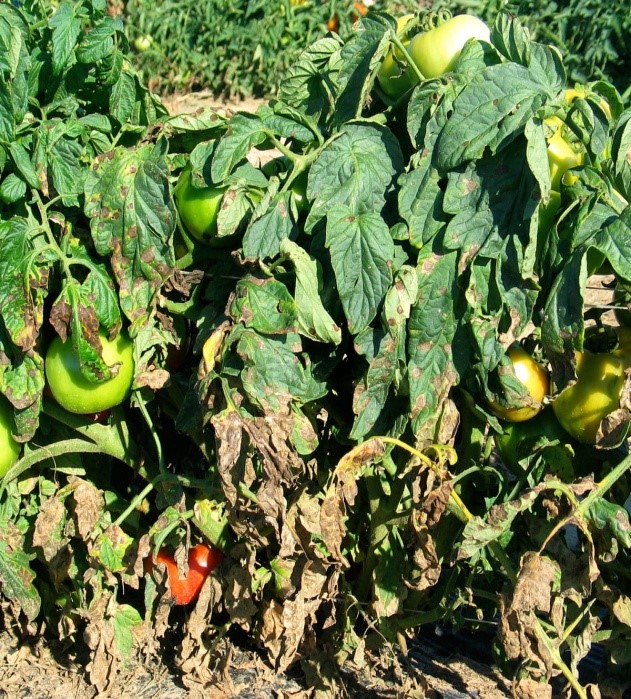
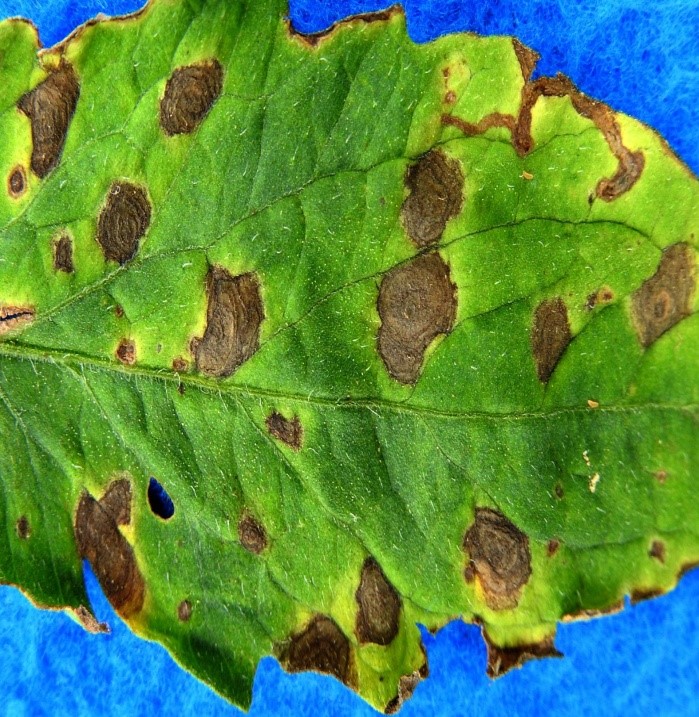
Late blight (Phytophthora infestation)
Identification
The Late Blight’s leaves have dark, watery stains, with a yellow spots inside. Sometimes the spots expand outward from the leaf’s core, and other times they start at the leaf’s edge and go inward. The white spots are on the underside of the leaves, and stems and fruit are also impacted.
Management
Cultural Control
➢ Use tolerant varieties
➢ Weed regularly and thoroughly
➢ Remove and burn affected plants and plant debris
➢ Do not plant young plants near older plants
➢ Apply mulch on seedbeds, so that less watering is needed
Chemical Control
➢ Apply effective fungicides (Coper hydroxide, chlorothalonil, Mancozeb)
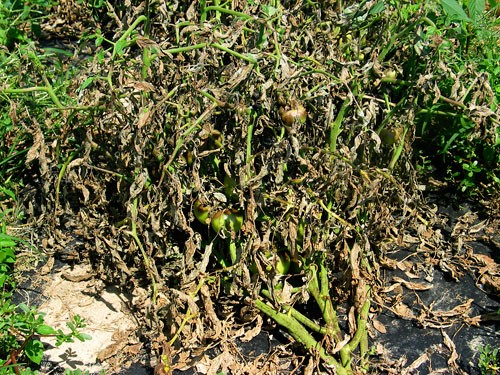
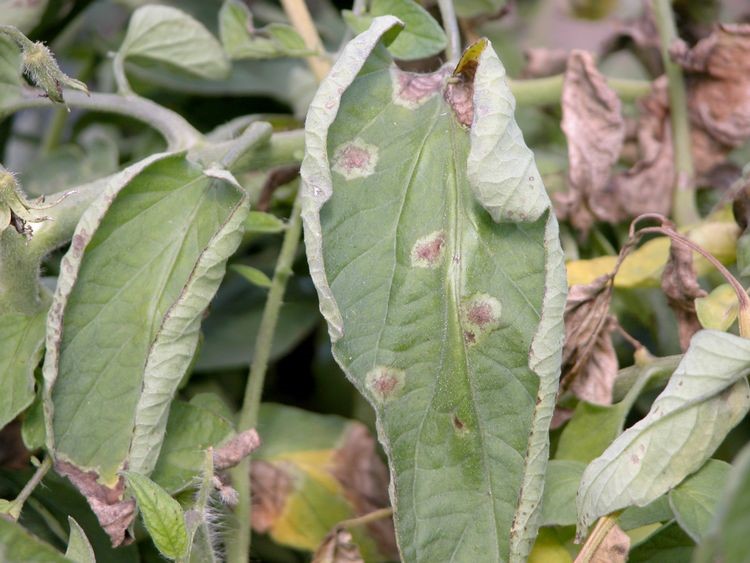
Fusarium wilt (Fusarium oxysporium)
Identification
Once infected, leaves begin to wilt, turn yellow, and curl at the margins from the bottom up. If the stem or roots are cut, there will be a brown stain visible. The plant may just wilt on one side or one leaf, while the other half or the remainder of the plant endures for a very long time in good health.
Management
Cultural Control
- Use disease-resistant plant species.
- Implement crop rotation.
- Dispose of and burn the harmed plants.
- Reduce the amount of watering required and cover the seedbed with mulch.
- Applying calcium will help the soil become less acidic.
Chemical Control
Prothioconazole, Azoxystrobin
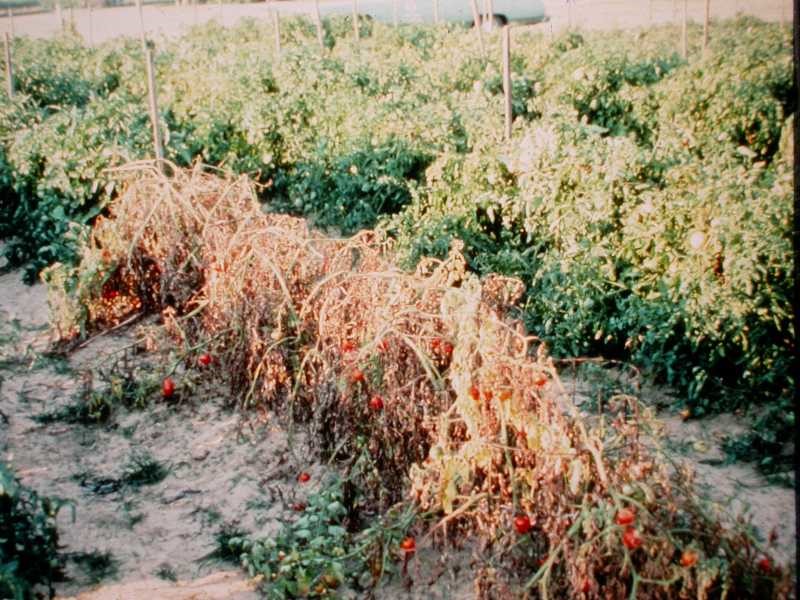

Insect Pests
Whitefly (Bemisia tabaci)
Identification
The adult fly is 1-2 mm long and white in colour. It consumes the leaf sap, exactly like the larvae do. A large swarm of whiteflies may fly up when plant leaves are flipped around. They lay their eggs on the underside of the leaves.
Management
Cultural Control
- Promote the presence of whitefly natural predators by placing different bushes or other plants on the land.
- Crop rows (inter-planting) or lanes between boundaries.
- Utilize tolerant cultivars (hairy leaves make it difficult for the whitefly to lay its eggs).
Chemical control: Used systemic insecticide imidacloprid, Bifenthrin, acetamiprid · azadirachtin (Neem Oil)
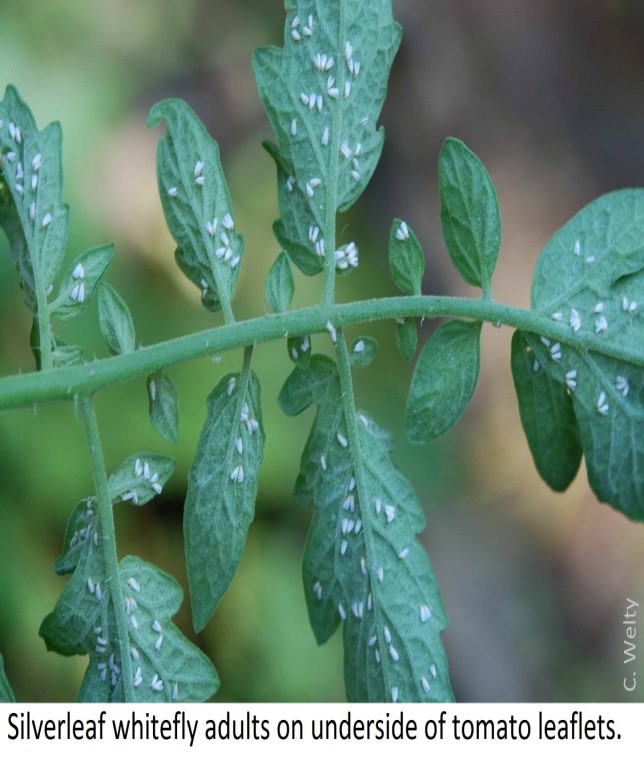

Aphids (Aphidae)
Identification: Aphids are 2.5 mm long, oblong, squishy insects. Aphids come in both wingless and wing varieties. When they attack the crop in great numbers, especially the newest leaves and stems, direct harm is inevitable.
Management
Cultural Control:
- Before planting fresh crop, remove old crop waste.
- Plant crops next to one another.
- Use nitrogen fertilizer sparingly.
- Cover the ground with a piece of grey plastic that reflects sunlight to deter aphids.
Chemical Control:
➢ Use natural sprays like neem oil or insecticidal soap to wash away aphids, bifenthrin, cypermethrin.
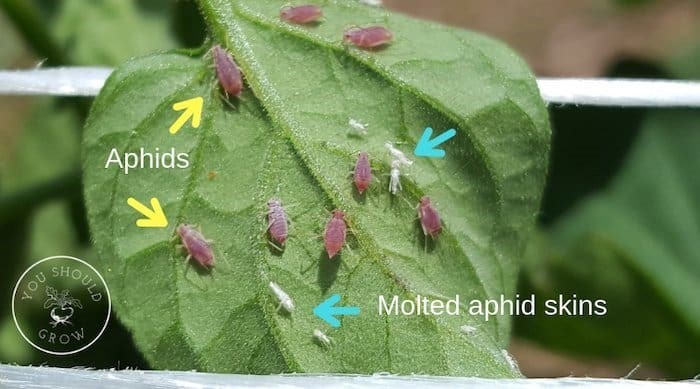
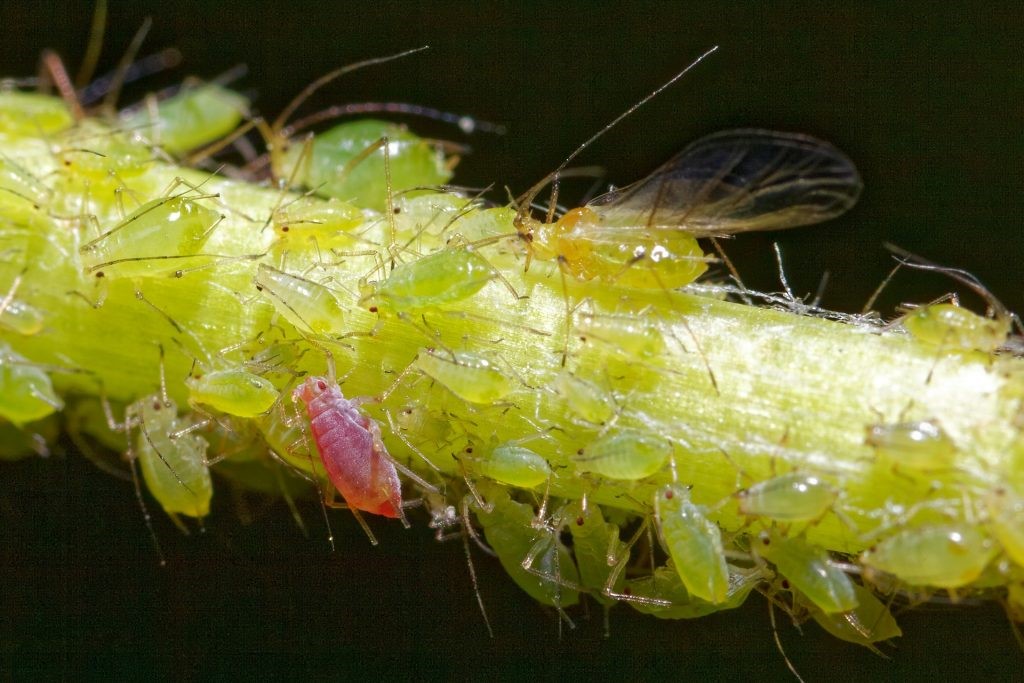
Thrips (Thripidae)
Identification: Thrips are incredibly tiny insects, measuring only 0.5 to 2 mm. In order to find them, you must look closely. Usually, they have wings. Thrips lay their eggs on the leaf. After around 10 days, the larvae appears and the leaf sap is sucked by the thrips’ larvae and adults, resulting in silvery spots on the leaf’s surface.
Management
Cultural Control:
- To stop thrips from transferring to the soil to form their cocoon, cover the area with plastic sheeting.
- Thoroughly till the soil to bring the cocoons to the surface, where they will wither and die.
- Eliminate agricultural waste.
Chemical Control:
➢ Carbosulfan @ 2ml/1 (0.2%) or Fipronil @ 1ml/1 (0.1%) and Profenophos 1 ml/1 (0.1%). Need based foliar application of insecticide sprays from 30 days after planting at 10- 15 days interval.
